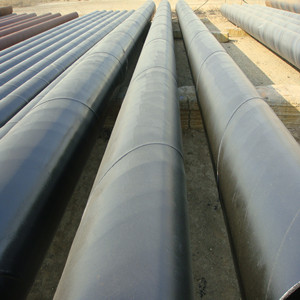Industry News
Commonly used valve and pipe or equipment end connection forms
Posted: 10/13/2019 09:50:24 Hits: 53
How to connect the whole valve with the pipeline or equipment, this problem can not be ignored, because the running, bubbling, dripping and leaking of the valve mostly occur in connection parts.
1. Flange connection
Flange connections are the most used form of connection between valves and piping or equipment. It refers to the detachable connection of the flange, the gasket and the bolt as a set of combined sealing structures. Pipe flange refers to the flange used for piping in the pipeline installation. When it is used on equipment, it refer to the inlet and outlet flanges of the equipment. The flange connection is easy to use and can withstand large pressures. Flange connection can be applied to valves of various nominal sizes and nominal pressures, but there are certain restrictions on the operating temperature. In high temperature conditions, it is easy to cause leakage because the flange connection bolts are prone to creep. In general, the flange connection is recommended to be used at a temperature of ≤350 °C.
According to the shape of the joint surface, it can be divided into the following types:
Raised face: for valves with low pressure, more convenient for processing.
Male and famale face: with high working pressure, medium hard washers are available.
Tongue and groove face: A gasket with a large plastic deformation can be used, widely used in corrosive media, good sealing effect.
Trapezoidal groove type: use oval metal ring as gasket for valves with working pressure ≥60kg/cm2 or high temperature valve.
Lens type: The washer is a lens shape made of metal. It is suitable for high pressure valves with working pressure ≥100 kg/cm 2 or high temperature valve.
O-ring type: newer flange connection, the sealing effect is more reliable than the general flat washer
2. Wafer type connection
A connection form in which the valve is installed between the flanges of two pipes and tightened to its place with the bolts.
3. Welded connection
The welded connection refers to a connection form in which the valve body has a welded groove and is connected to the piping system by welding.
GB/T 12224, API 600, ASME B 16.34 and other standards specify the welding groove.
The welded connection between the valve and the pipe is divided into a butt weld connection (BW) and a socket weld connection (SW), and the socket weld end shall comply with the provisions of JB/T 1751. Butt weld connection (BW) can be applied to various sizes, various pressures and high temperature conditions. Socket weld connection (SW) is generally suitable for valves ≤ DN50.
4. Threaded connection
This is a simple connection method and is often used for small valves. There are two cases:
Direct sealing: Internal and external threads act directly as a seal. In order to ensure that the joints are not leaking, they are often filled with lead oil, wire hemp and PTFE thread seal tape. Among them, the PTFE thread seal tape is widely used.
This material has excellent corrosion resistance, excellent sealing effect, easy to use and store, and can be completely removed when disassembled, because it is a non-stick film, which is superior to lead oil and wire.
Indirect sealing: The force of the screw tightening is transmitted to the washers on both sides, allowing the washers to act as a seal.
5. Taper seal connection or ferrule type connection
The working principle of the taper seal connection is that when the nut is tightened, the ferrule is subjected to pressure, and the blade portion bites into the outer wall of the tube, and the outer tapered surface of the ferrule is tightly pressed against the tapered surface of the joint body under pressure, thereby reliably preventing leakage.
The advantages of this form of connection are:
1) Small size, light weight, simple structure, easy assembly and disassembly;
2) Strong connection force, wide application range, high pressure resistance (1000 kg/cm 2 ), high temperature (650 ° C) and shock vibration;
3) A variety of materials can be selected for corrosion protection;
4) Processing accuracy requirements are not high;
5) Easy to install at high altitude.
At present, the form of ferrule connection has been adopted in some small-diameter valve products in China.
6. Clamp connection
This is a quick connection method that requires only two bolts for low pressure valves that need to be often disassembled.
7. Self-tightening connection
The internal self-tightening connection is a form of connection that uses the pressure of the medium to self-tighten. Its seal ring is installed at the inner cone, at an angle to the opposite side of the medium, the medium pressure is transmitted to the inner cone, and is transmitted to the seal ring. On a tapered surface of a certain angle, two component forces are generated, one parallel to the center line of the valve body and the other pressed against the inner wall of the valve body. The latter force is self-tightening. The greater the medium pressure, the greater the self-tightening force. Therefore, this type of connection is suitable for high pressure valves. Compared with the flange connection, it saves a lot of material and manpower, but it also needs a certain pre-tightening force, so that it can be used reliably when the pressure inside the valve is not high.
Valves made by using the principle of self-tightening are generally high pressure valves.
8. Other connection types
There are many other valve connections. For example, some small valves that do not have to be removed are welded to the pipe; some non-metallic valves are socket joint connected, and so on. Valve users need to deal with the situation according to the circumstances.

Post URL: https://www.landeepipe.com/commonly-used-valve-and-pipe-or-equipment-end-connection-forms.html
Landee Pipe is a professional
industrial pipe manufacturer based in China, we have been producing pipe for a variety of applications, and covering areas of pipe manufacturing, exporting and trading. welcome to access our website: https://www.landeepipe.com.


